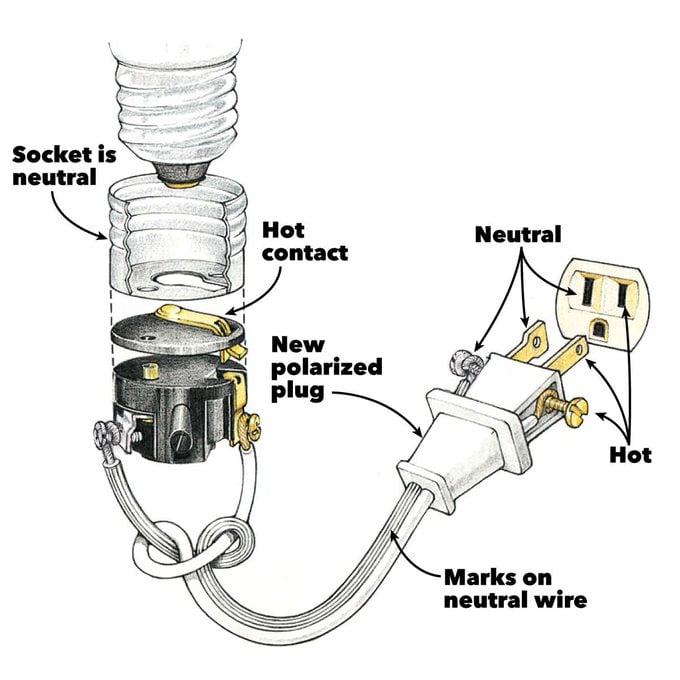Wiring a Plug: Replacing a Plug and Rewiring Electronics
Updated: Mar. 08, 2023
How to wire a new plug safely
On This Page
Properly wired plug and lamp socket
Maintain the correct hot and neutral electrical paths from the outlet to the light bulb.

Wire a plug to maintain correct polarity
Wiring a new plug isn’t difficult, but it’s important to get the hot and neutral wires connected to the proper prongs. The danger isn’t fire. The worry is that a miswired plug poses a fairly serious shock hazard. The key is to make sure you connect the wires to the proper terminals in the plug. The wide prong on the plug links the threaded base of light bulbs to the neutral terminal (the wider slot) in the receptacle. The hot side of the outlet (the side that can deliver a shock) is wired to the threaded socket if the wires are reversed. Normally there’s a cardboard insulator isolating the base from the socket. If the cardboard insulator is worn out (common on old lamps), the metal parts of the lamp also could become “hot”(charged). You can then get a dangerous shock if you touch the metal, which is easy to do when you’re “grounded” and changing a dead bulb. For example, if you’re standing on damp concrete or in contact with a radiator or other plumbing pipe while you’re touching a miswired lamp, you could get a dangerous jolt of electricity.
Which wire is neutral?
Buy a “polarized” replacement plug, that is, one that has a normal prong and a wide one. The neutral line on the lamp cord is the one that’s odd; it’ll have ribbing, a sharp ridge or printing on it. If the cord is translucent, the neutral is silver. The wire that goes to the narrower prong has a smooth, plain surface or is gold in color.
Buy a polarized plug from Home Depot right now.
When connecting an electrical wire to a screw terminal, always wrap the wire clockwise around the screw. When wrapped correctly in a clockwise direction, the wire will be pulled tighter as you tighten the screw. This results in a much more solid, safer connection.